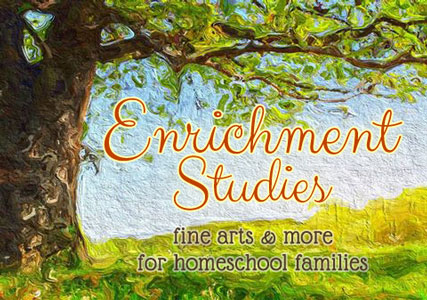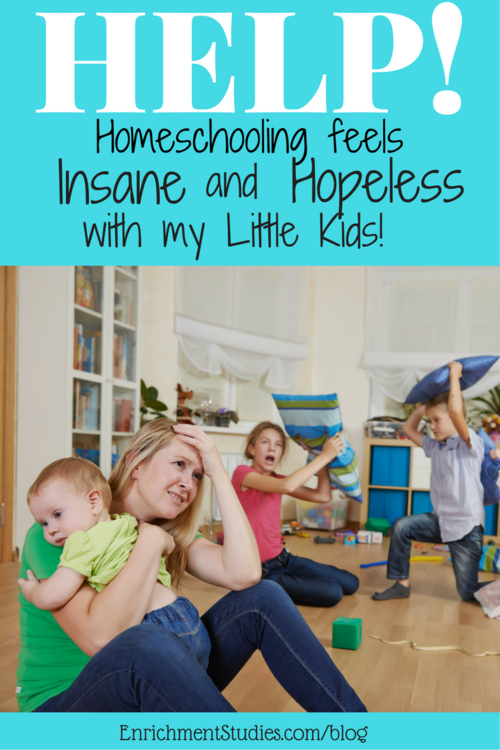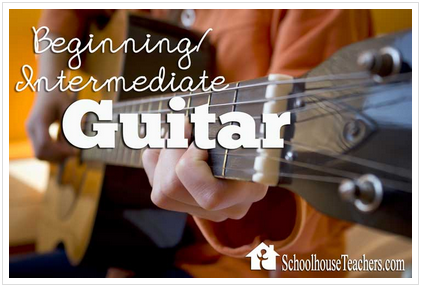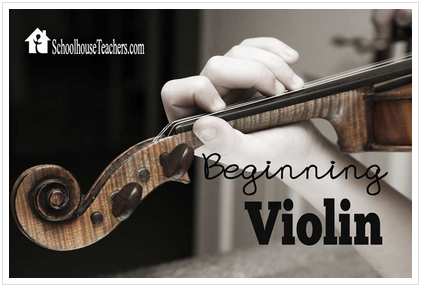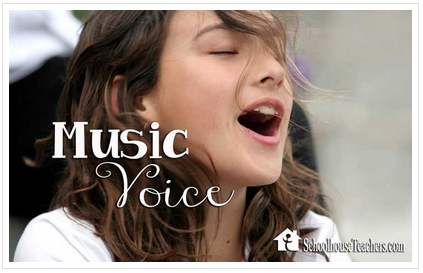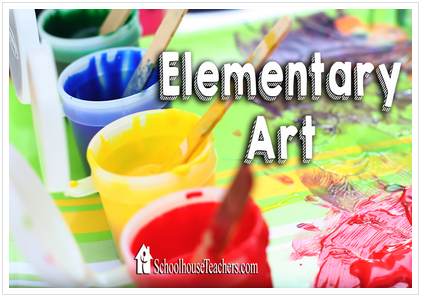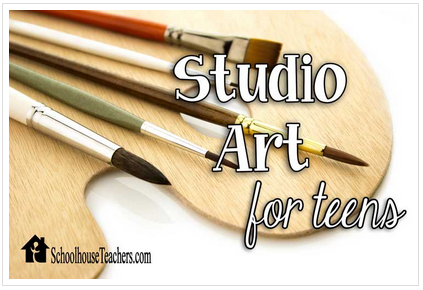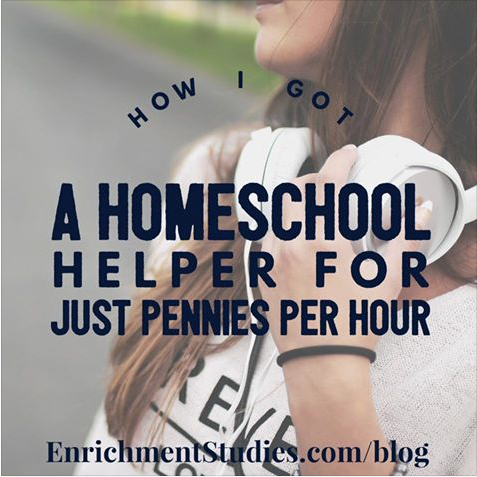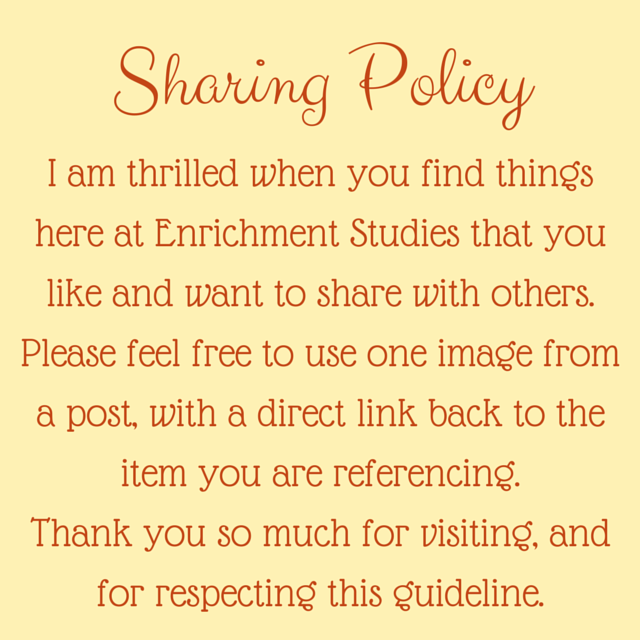by Erica Johns | May 1, 2018 | Spring Fling Giveaways

Click here for more information about this product. This is my referral link.
Homeschool moms have a ton of stuff to stay on top of, and this planner will help! Includes help for lesson planning, assignments, activities, personal and spiritual growth, and more. $29 value
US Addresses only. Giveaway is open through May 6, 2018.
Winner is Allison
by Erica Johns | Apr 24, 2018 | Spring Fling Giveaways

Click here for more information about this product. (referral link)
Writers in Residence is a language arts curriculum from Apologia that focuses on writing and developing the writer’s voice, for grades 4-8. One lucky winner will receive the Student Text/Workbook and the Answer Key and Teaching Notes. $89 value!
US addresses only.
Giveaway open through May 6, 2018
Winner is Loranna K
by Erica Johns | Mar 30, 2018 | Great Stuff for Homeschool Moms, Reviews, Spring Fling Giveaways
 One of the things I’ve loved about being a part of a homeschool support group is that my kids have had opportunities to take part in regular school experiences like competitive sports teams, proms, groups classes, yearbooks, clubs, and graduations. Last year our third child, Jacob, graduated, and it was our first experience with a homeschool graduation ceremony. I was so impressed at how lovely and meaningful it was! All of the graduating seniors were decked out in cap, gown, and tassels, and received diplomas, and I loved that it was in no way a second-rate experience for them!
One of the things I’ve loved about being a part of a homeschool support group is that my kids have had opportunities to take part in regular school experiences like competitive sports teams, proms, groups classes, yearbooks, clubs, and graduations. Last year our third child, Jacob, graduated, and it was our first experience with a homeschool graduation ceremony. I was so impressed at how lovely and meaningful it was! All of the graduating seniors were decked out in cap, gown, and tassels, and received diplomas, and I loved that it was in no way a second-rate experience for them!
With three remaining high schoolers to graduate from our homeschool, I was delighted when Homeschool Diploma wanted to send me some of their products to review! I noticed during our senior year, many parents in our group did not know where or how to find graduation supplies for their homeschooled senior, and I ended up kind of cobbling together items helter-skelter, so I know this is a common need. Being able to see the large assortment of options, and experience the quality of the products available at Homeschool Diploma has been impressive, and I am so excited to share about this with you!
Homeschool Diploma offers all the supplies and products you need for your seniors, from the actual diplomas and diploma covers, to caps and gowns, announcements and Thank You cards, gifts, and even class rings! If you’ll have a graduate within the next four years, you will definitely want to get in on this.

The first item I got to check out was a beautiful customized diploma. Since I don’t have a graduating senior this year, I made one up for a friend of ours, and it really turned out lovely. You can choose from really nice standard, simple diplomas for as little as $29.99, or choose from many different options to create a more personalized keepsake that reflects your homeschool and student.

The one we got has the graduate’s name and school name on the front cover, a beautiful engraved seal, a Bible verse, and a diploma cover tassel.
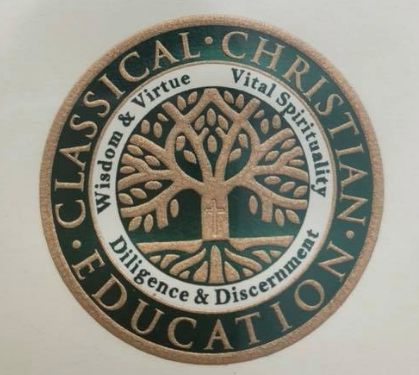
It’s wonderful quality and I love how it offers parents the opportunity to convey their joy and accomplishment in graduating their child in ways that reflect their own style and personality.
In addition to the diploma, we also opted to get an extra, archive copy of the diploma. This is great so that your graduate can take their actual diploma with them, but mom and dad can keep a spare copy for their records in case it’s ever needed. It’s high-quality and enclosed in a clear, archive envelope to protect it.

We were also able to get a cap, gown, and tassel set, which is a must-have for any graduation ceremony. Homeschool Diploma offers two fabric types (matte or shiny) and a wide variety of colors. Gowns are sized by height, so it’s quick and easy to choose one that’s right for you. Plus sizes are also available. I was really pleased to see that the quality of the gown is quite nice. The fabric has a soft, comfortable feel and a nice weight and drape, and the zipper works smoothly and feels like it is good quality. The cap is also well-made and sturdy.

I especially liked the charm on the tassel, which is a good weight and definitely feels like a quality keepsake, and not some cheaply made trinket. Certainly you could save and reuse these caps and gowns for future graduates in your family.
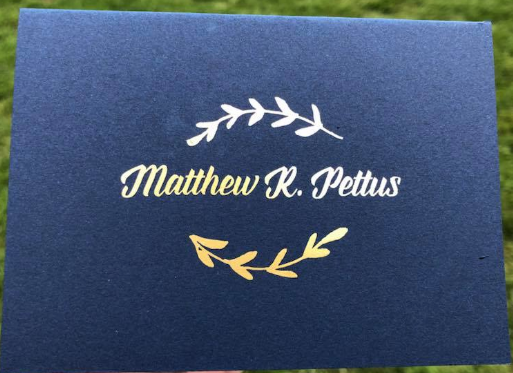
The final item I was able to check out was the personalized notecards. We opted for a navy blue card with Matthew’s name in gold on the front. The paper used for these notecards is a nice weight and quality. These cards are perfect for post-graduation thank you notes, as well as an ongoing stash of personalized stationery as your student goes on to further education, job interviews, and so on. Since the cards are completely navy blue, you will want to get a white gel roll pen to use with them, and thoughtfully, Homeschool Diploma offers one for a nominal fee.
All-in-all, my impression of everything that I got to experience from Homeschool Diploma was care and quality. Each item is something I would be so pleased to use with my own graduates, knowing that every item is well-made and high-quality and reflective of our excitement at having reached this milestone with our child!
by Erica Johns | Mar 13, 2018 | Great Stuff for Homeschool Moms, Language Arts, Notebooking, Reviews, Spring Fling Giveaways
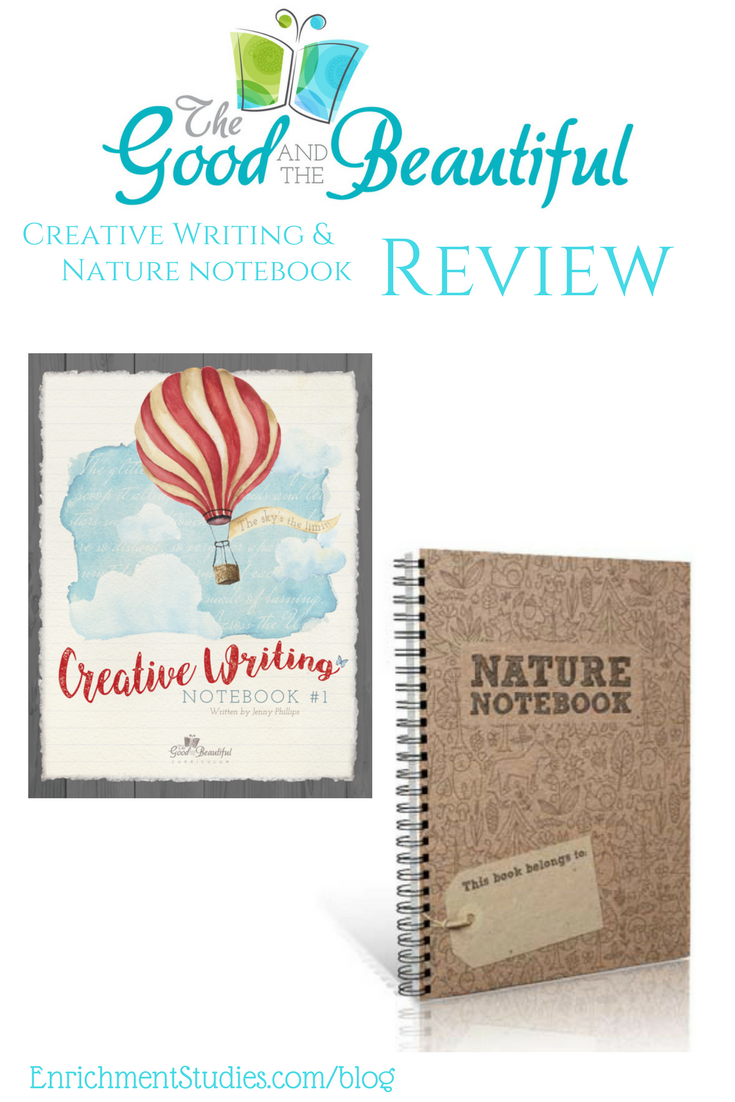 Any Christian homeschoolers that spend time on social media have surely heard of The Good and the Beautiful by now. This relative newcomer to the homeschool curriculum scene has been quickly accepted as a favorite by many, and is known for their integration of fine arts into their materials, which I know is a special interest for Enrichment Studies readers, so I’m always eager to check out their materials and see what might be of interest to my peeps. When The Good and the Beautiful asked me to review their Creative Writing Notebook and their Nature Notebook, it was an easy yes from me! They have generously sponsored this review.
Any Christian homeschoolers that spend time on social media have surely heard of The Good and the Beautiful by now. This relative newcomer to the homeschool curriculum scene has been quickly accepted as a favorite by many, and is known for their integration of fine arts into their materials, which I know is a special interest for Enrichment Studies readers, so I’m always eager to check out their materials and see what might be of interest to my peeps. When The Good and the Beautiful asked me to review their Creative Writing Notebook and their Nature Notebook, it was an easy yes from me! They have generously sponsored this review.
Creative Writing Notebook
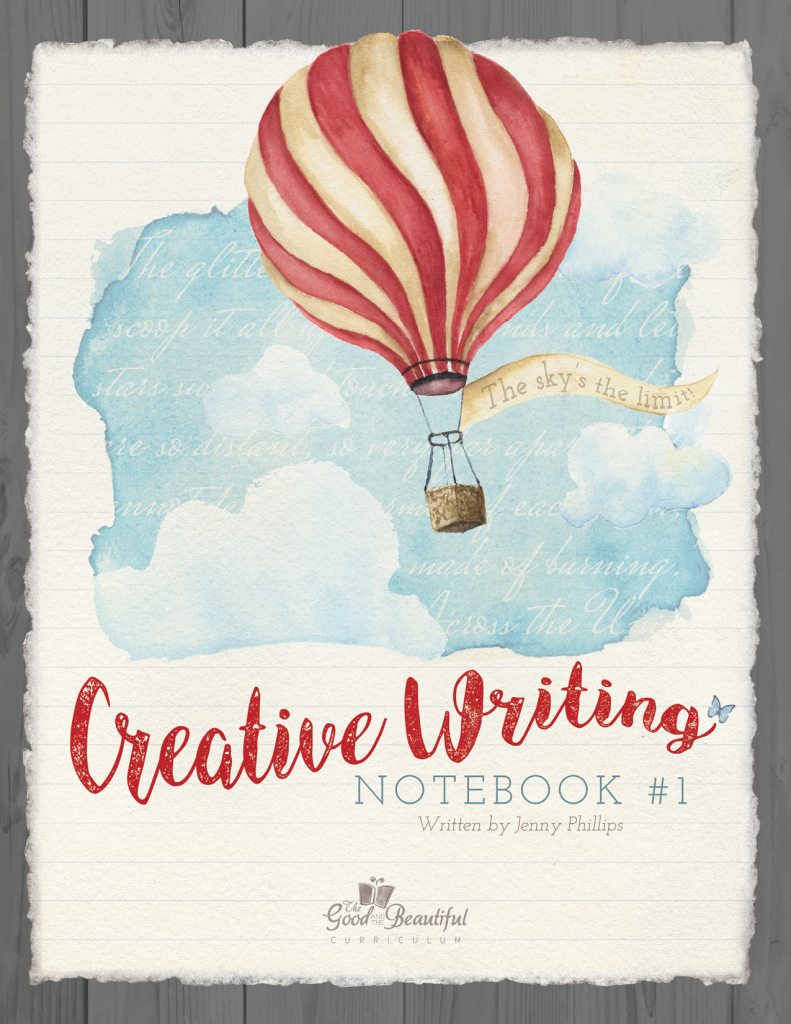 The beautiful Creative Writing notebook does a terrific job of leading children through various aspects of creative writing in a way that is engaging and interesting. Designed for students in grades 4-12, my own high schoolers have been using this on all the days when I didn’t have something else planned for their writing. Even without my involvement, my students can easily move forward onto the next writing activity and they have enjoyed it.
The beautiful Creative Writing notebook does a terrific job of leading children through various aspects of creative writing in a way that is engaging and interesting. Designed for students in grades 4-12, my own high schoolers have been using this on all the days when I didn’t have something else planned for their writing. Even without my involvement, my students can easily move forward onto the next writing activity and they have enjoyed it.
This 89-page spiral notebook includes five sections:
- Descriptive Writing Practice
- Writing Exercises
- Story Starters
- Poetry
- Full Stories
I like how simply and effectively the student is guided on how to develop and improve their writing. The subtlety of it makes it feel less like school work, and more like a guided writing journal, which I think is wonderful for so many kids. I have reluctant writers and dyslexic kids, so this is an area we have struggled in. I’m happy to say that with the Creative Writing Notebook, I’ve seen each of my remaining high schoolers improve in their writing skills AND enjoy it! Pretty awesome!
Enrichment Studies families and others that value the integration of the arts into other subjects will appreciate that writing poetry and the process to get you there is included in this book. There are also several works of art included in this book that are used as jumping off points for observation, description, writing poems, and other aspects of writing development.
This is one of my favorite things that we’ve been using this school year, and I feel you really can’t go wrong with it for any child that is ready and able to do some writing. The fact that it’s presented so simply and in a non-intimidating way is a plus, and it doesn’t run on a lot of Mom Power, which I know we can all appreciate. It’s very affordable, at just $14.99, and will work with all learning styles.
One final note: The Good and the Beautiful is a non-denominational Christian program, but I found that the Creative Writing Notebook does not add in religious or spiritual messages. With the possible exception of the first page, it stays focused on writing skills alone, which makes this a great option for all families, including those that prefer to share spiritual beliefs with their children on their own, rather than with educational materials. As always, The Good and the Beautiful materials are wholesome with no objectionable or inappropriate content. It is well-done and stays on topic in an appropriate and professional way.
Nature Notebook

Nature Study is a popular buzzword in homeschool communities, and Charlotte Mason circles in particular. Whether you are already spending time in nature study, or if (like me) you kind of don’t understand where to start or what to do, you will love the Nature Notebook from The Good and the Beautiful.
This 117-page spiral bound nature notebook makes it fun and easy to get into nature study! Sections are divided by the four seasons (plus one Any Time section) and there are clear activities suggested for you to do, such as leaf collection or drawing, scavenger hunts done on a nature walk, description prompts (seamlessly pulling writing skills into the process), drawing and observation prompts, tie-ins with poetry and illustration, collection ideas (Seeds, rocks, flowers, leaves, etc.), and much more.
True Confession: I have always loved the idea of getting the kids out in nature, but honestly never understood what purposeful thing we were supposed to “do” aside from just take a walk and see things that we might talk about, etc. Having these suggested activities is a terrific way to get started and get over that hump of not really knowing what to do. The fact that you can jump around from one activity prompt to another is handy for families since it flexes with your needs and wishes. You can easily let the children pick what they’d like to do for your outing, and there is plenty that the kids can do as self-led nature study right in your own back yard! I also appreciate that there are plenty of things in the Nature Notebook that you can do indoors. Whether you have weather or personal needs that keep you inside, you can definitely keep going and let nature study be a part of your everyday school life.
Any age child can use this notebook, and you could use a fresh Nature Notebook year after year, since the observations you make and collections you form, etc. will be fresh and different. I also appreciate that you don’t have to finish this in one year. If you aren’t avid nature walkers, if you’re having a baby and not able to get out much this year, or simply had nature study fall of your radar for awhile, each child can still enjoy and treasure their Nature Notebook over several years and get so much out of it!
One aspect of the Nature Notebook that I found myself questioning was that there are some nature “scrapbooking” type activities suggestions that I am not sure how they would practically work. For example, gluing leaves onto pages seem like they would make it hard for the book to close, the leaves would eventually dry and get crushed and make a mess, etc. The bark rubbing activity seems like it has great potential to get the book pages ripped and would be awkward to accomplish with the page still attached to the book. I love the inclusion of these activities, but I think I would copy those particular pages on my home scanner/printer and provide a fresh stand-alone page for the kids to do those activities on instead. A 9×12 plastic storage box might be a perfect spot to store your Nature Notebook, plus all collections, nature treasures, and three-dimensional projects where they are more protected and can be enjoyed again and again.
Like the Creative Writing Notebook, the Nature Notebook doesn’t directly include any religious elements, so this is an item that will work for all families and all ages. The Nature Notebook sells for just $12.
Get The Good and the Beautiful annual reading list for FREE!
Each year The Good and the Beautiful publishes a popular reading list, and subscribers to their newsletter can get it for FREE! They also sometimes give away freebies, so this is a great way to make sure you don’t miss a thing. You can subscribe on their home page by clicking here.
You can read my other review of The Good and the Beautiful here:

by Erica Johns | Mar 6, 2018 | Art, Great Stuff for Homeschool Moms, Spring Fling Giveaways
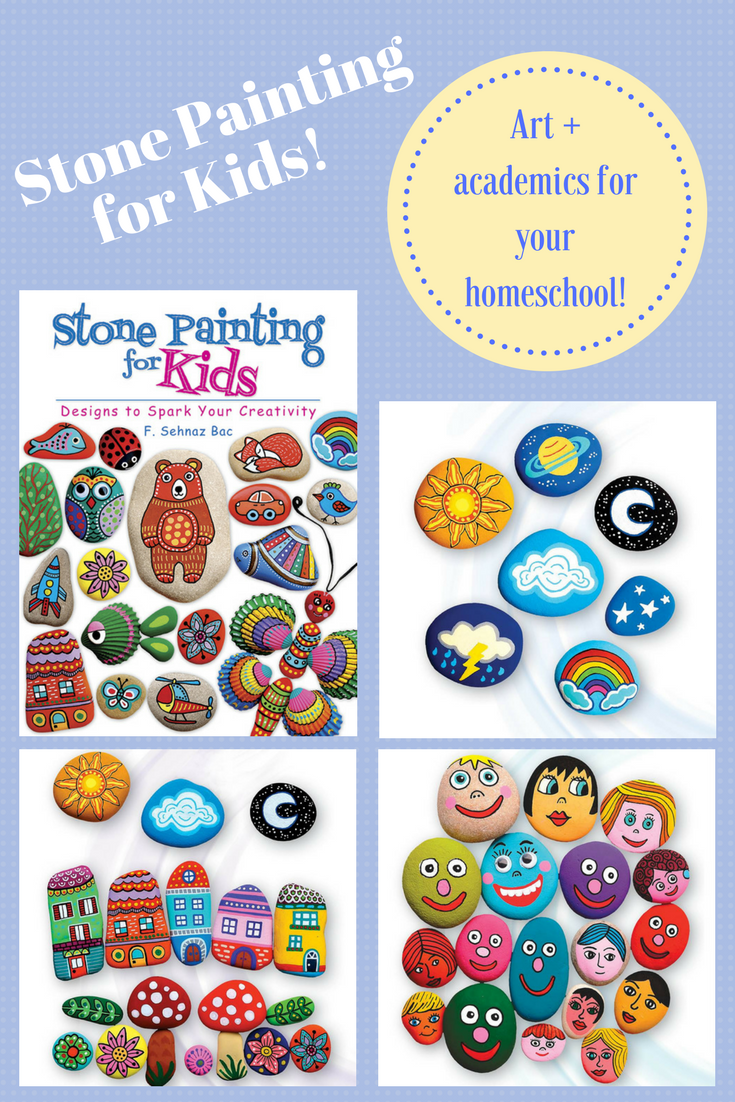
It seems like kids always love arts and crafts, and the new trend of stone painting is super popular and so fun for all ages! What’s more–you can really elevate the crafty side of this activity and use it across all areas of learning! I was incredibly inspired when I got to read through the book Stone Painting for Kids and saw so many possibilities for homeschoolers to mesh the creative with the academic! Read on for lots of creative learning inspiration, sponsored by Dover Publications.
Included in the book are ideas like:
- Geometric shapes (teach your young kids colors and shapes!)
- Numbers (early learning and math opportunities)
- Letters (early reading, spelling, and writing opportunities)
- Hearts
- Faces (including fun cartoon styles that kids will love learning)
- Multi-pebble flowers
- Mushrooms (SO cute!)
- Dominoes (yes! You can make your own dominoes game!)
- Shell painting (fish, butterflies, and more!)
- Chess sets (make your own set and then learn to play!)
- Multi-pebble rabbits and other animals and people
- Words (make sentences, poetry, verses, inspiration pieces, and more!)
- Flowers (combine with your nature studies!)
- Houses and Vehicles (you can make a whole town scene and create vehicles to cruise around!)
- Memory Match game! (perfect for your young kids)
- Sky scenes (including the solar system!)
- Animals of all sorts
- Tic-Tac-Toe game
- Chalkboard paint stones
- Washi taped stones
- Math and counting game ideas
- Storytelling activities
- Spelling games
- Scenes and themes you can make
- and more!
The tons of photos of painted stones and the process to create them are wonderful, and really help you understand the steps you’ll need to take to make something similar yourself. I really like it that stone painting can be as simple as your preschooler would need it to be, but also complex enough to challenge and excite high schoolers and adults.
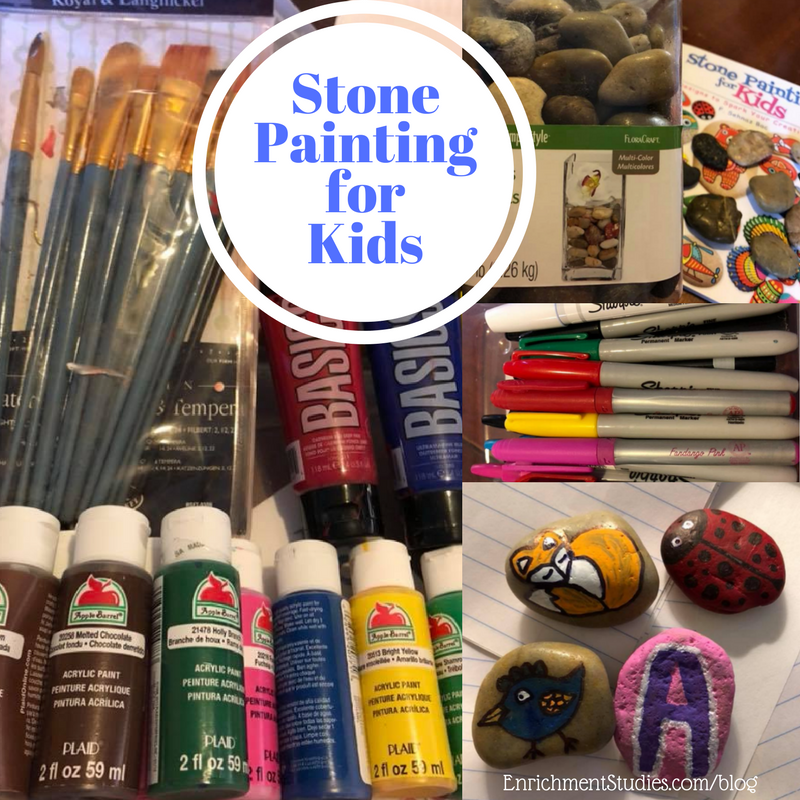 I spent a few enjoyable hours painting stones with the help of this book, and was delighted to see that even someone like me, that doesn’t have great original ideas for thinking something up, could replicate some of these adorable concepts and end up with a fun little treasure to enjoy!
I spent a few enjoyable hours painting stones with the help of this book, and was delighted to see that even someone like me, that doesn’t have great original ideas for thinking something up, could replicate some of these adorable concepts and end up with a fun little treasure to enjoy!
My favorite items that I successfully made were a sleeping fox, a cute birdie, a ladybug, and a pink and purple A to give to my little granddaughter whose name starts with A.
The other thing I super loved about this book is all of the inspiration to enjoy the creative side of this process, but then use the creations in the learning process in your home. Imagine how fun it would be for your kids to paint stones with letters and numbers, and later use those to learn sounds and math! You could work together with your younger children to paint simple stones with just one color per stone, and end up with a wonderful set where you could practice sequencing! For older kids, you could make a solar system set of painted stones, or write out one word per stone from a piece of poetry or Bible verse that you’re memorizing, and enjoy putting them into the right order or creating displays. History lessons can be enhanced by painting stones with homes from different cultures and eras. Nature study can be enjoyed on a rainy or too-cold day by painting stones in ways that remind you of things you’ve seen in your nature walks! Truly, the possibilities are endless, and this book is a wonderful resource for inspiring you and helping you get started.
The author, F. Sehnaz Bac, is a stone paint artist who sells her creations on Etsy, and in this book she takes us by the hand and provides all of the basic advice on how to get started with stone painting, such as choosing stones and preparing them, what materials you can use to paint and decorate them, technique tips, and more. I appreciated that the information in the book was straightforward and to-the-point, and that the step-by-step instructions were helpful without being tedious.
I was pleased to find that art supplies I already had on hand worked great for my stone painting project! The only thing I purchased for this project was a container of craft stones from Walmart for under $5. (They had bags of sea shells available, too!) Other than that, I used the acrylic paints and the paint brushes that I shared about in this post, plus my collection of sharpie markers and a white sharpie paint marker. Easy peasy!
You can connect with Dover Publications at their website, as well as on Facebook, Twitter, and Instagram
Watch my Facebook Live Show & Tell video here:
by Erica Johns | Jan 31, 2018 | Dyslexia, Spring Fling Giveaways
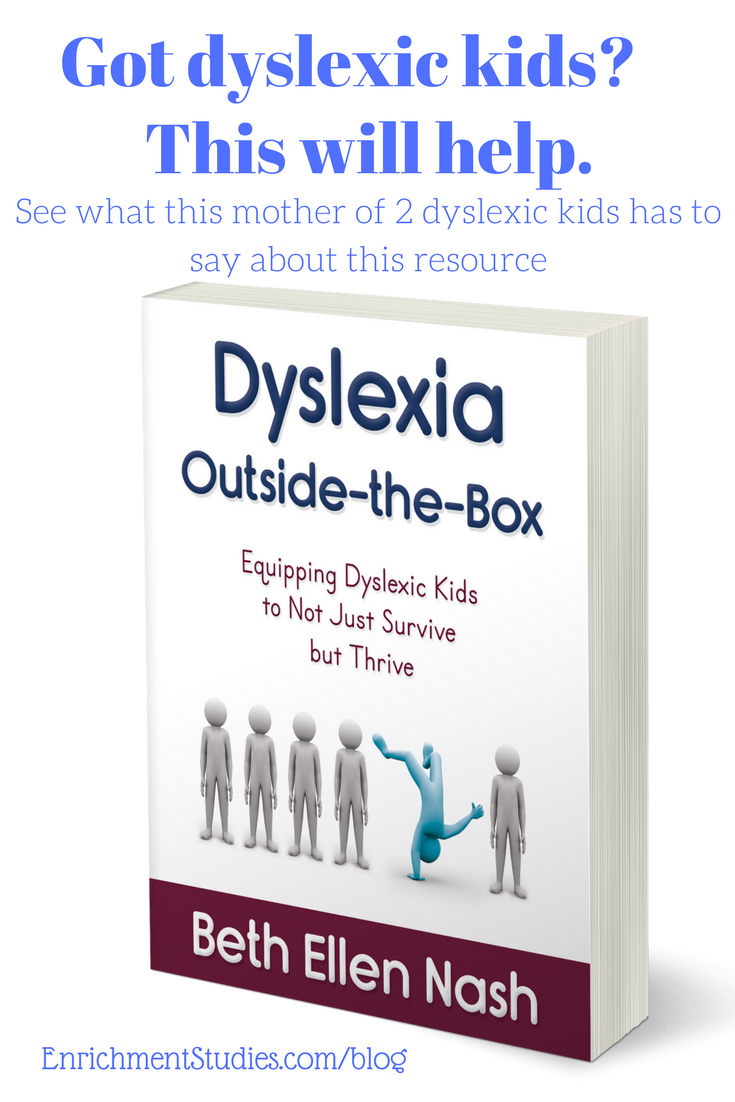 Over the years I’ve shared about my experiences homeschooling my six children, including two of whom have dyslexia. I’m often excited and encouraged to see new developments, awareness, and resources coming available to help other families that are striving to help their children learn, despite any special challenges or difficulties. When I was given the opportunity to review Beth Ellen Nash’s book, Dyslexia Outside-the-Box, I knew I wanted to check it out so I could share about it with other parents that are also searching for answers. The author has kindly sponsored this post, while all opinions expressed are my own.
Over the years I’ve shared about my experiences homeschooling my six children, including two of whom have dyslexia. I’m often excited and encouraged to see new developments, awareness, and resources coming available to help other families that are striving to help their children learn, despite any special challenges or difficulties. When I was given the opportunity to review Beth Ellen Nash’s book, Dyslexia Outside-the-Box, I knew I wanted to check it out so I could share about it with other parents that are also searching for answers. The author has kindly sponsored this post, while all opinions expressed are my own.
Dyslexia can be a really confusing thing for parents to identify and understand, particularly because it’s not a straightforward condition. While many people think that dyslexia is mainly about confusing b and d, p and q, or writing other letters or numbers backwards, instead it includes so many different traits and levels of difficulty, that in some ways I think it would be true to say that it is not exactly the same for any two people. Dyslexia Outside-the-Box offers us a fresh look at both the common challenges that dyslexic people face, but also does the great service of giving us insight into the unique strengths that often accompany dyslexia. This is such an important and encouraging thing for dyslexic kids and parents to understand, because it can be easy to get stuck in a spot where you feel like dyslexia is all about having a learning disability, instead of realizing that it also comes with some superpowers that are pretty awesome. This book does a great job of offering parents and educators information on mitigating the difficulties, while also capitalizing on the strengths that dyslexics are often blessed with. Even my young adult dyslexic son continues to be encouraged by mentions of high-achieving people in all walks of life and throughout history that share his dyslexic traits. These people continue to remind him that while he has some things that are difficult for him, he is also extremely gifted in other areas.
I really appreciated the candor with information about common misperceptions of dyslexics. One of the reasons I knew my dyslexic kids needed to be home educated was because I did not want them in an environment where they were getting the message that they were “the dumb one.” This quote in the book is just one example:
“The brain of the intuitive processor works so quickly that the tongue cannot keep up. Their relatively slower verbal-processing speed leaves observers with the impression they are stupid, daydreaming, not paying attention, or lazy.”
What a valuable insight for parents and educators that may be tempted to jump to these negative conclusions about a child, rather than learning to understand the true nature of what’s going on! Just the other night my 19 year old dyslexic son shared about some of his experiences in a group homeschool class where people were quick to write him off because he was not great at verbalizing his understanding of a topic. When he would have a rare opportunity to express his thoughts, he noticed that the other kids in his class looked kind of amazed that he actually knew something. Well, observant parents usually know that their children are smart, and in the case of dyslexia, a home education can be an ideal space to capitalize on your child’s strengths with no stigma attached. This book is a wonderful resource for all parents with this goal.
The chapters in the book address typical areas of struggle for dyslexics, including reading, spelling, and writing, and give a lot of practical ideas for making learning work in all of these areas. Experienced parents of dyslexic kids may be encouraged to see that some of their favorite learning materials align very well with the recommended ways of approaching these challenges, and for parents that are still figuring out what works, this book is very helpful in giving you insight and guidance on what types of approaches work best for dyslexic kids and why. I really enjoyed seeing the lists of specific ideas related to memory devices, skip counting and other memory songs, role playing and special projects, and more.
 For those of you that have done your fair share of exploration into various methods for addressing dyslexia, you’ll be sure to recognize the many mentioned techniques and approaches such as Orton-Gillingham, Lindamood-Bell, Davis Dyslexia Correction methods, Diane Craft, and others. Author Beth Ellen Nash is quite familiar with all of these, and more, and does a good job of explaining the various ways these can be helpful, and also explains how the services she offers at Wings to Soar Online Academy incorporate a wide range of these skills to help students. There are also lots of mentions of online resources that can be helpful for dyslexics, such as Moby Max, MindPlay, and many others.
For those of you that have done your fair share of exploration into various methods for addressing dyslexia, you’ll be sure to recognize the many mentioned techniques and approaches such as Orton-Gillingham, Lindamood-Bell, Davis Dyslexia Correction methods, Diane Craft, and others. Author Beth Ellen Nash is quite familiar with all of these, and more, and does a good job of explaining the various ways these can be helpful, and also explains how the services she offers at Wings to Soar Online Academy incorporate a wide range of these skills to help students. There are also lots of mentions of online resources that can be helpful for dyslexics, such as Moby Max, MindPlay, and many others.
The appendix section takes up more than half the book and is incredibly valuable. It includes:
- Dyslexia Intervention Options: Excellent advice for parents seeking help within schools, outside of school, and while homeschooling, with specific actionable recommendations that you can start using right away, as well as information that directly pertains to services available through Wings to Soar Online Academy. This section is also very helpful in giving a thorough summary of other popular methods for dyslexia intervention, which will certainly save parents a lot of time and legwork to simply have a good summary in this one resource. I also like that there is specific information about how long it should take before you start to see the fruits of your labors. Knowing what you’re looking for and when to expect to see it is a big help in keeping going with new approaches to help your child!
- Leveling the Playing Field through Accommodations: Whether you’re seeking an IEP in a school setting, or looking for ways to help your child’s learning soar despite their dyslexia, this is a great chapter full of help. Even experienced parents of dyslexics are sure to find at least a few new tools here, or be reminded of a few that you may have forgotten about.
- Teaching Principles, Strategies, and Tools: I love this chapter and the very specific, actionable suggestions for teaching dyslexic kids. This information is pure gold for all home educators with kids of all types, and will provide you with the sort of teacher training that I wish every home educator could receive!
- Expanded Multisensory Practice: This chapter is an additional gem that you will not want to miss!
- High-Frequency Spelling Patterns Worth Learning: I love the practicality and expediency of this approach! This information helps you cut straight to the best use of your time for helping your children (all of them!) learn to spell and understand spelling rules.
- Phonological and Phonemic Awareness Exercises: This chapter is another great teacher training opportunity for parents. So valuable!
- Challenges that Often Co-Exist with Dyslexia: As most parents of dyslexic kids know, it’s usually not just that one thing. Executive function issues, dysgraphia, attention issues, auditory and visual issues, processing issues, and other challenges are often additional factors. This chapter will quickly help you understand what else you might be observing, and give you a starting point for getting help with those things as well.
- Making Sense of Jargon: This is valuable for all parents that are delving into the world of special educational needs. Just like the rest of this book, it’s very practical and useful.
- Resource Recommendations: This terrific section provides you with some of the best and most helpful resources for learning more and solving issues that your kids are facing. For the home educating parent that is typically having to become a junior expert on all of these issues, this section is a great road map for learning and becoming more aware of what’s available to help you and your child.
Overall, this book is very positive, practical, and actionable, and I believe it can be an excellent tool for all parents looking for ways to educate themselves to be able to better help their dyslexic kids. I appreciate that the book has a helpful combination of advice for parents that are interested in becoming equipped to handle these challenges themselves, as well as specific information about how the Wings to Soar Online Academy is available to assist. So many families find expert guidance helpful in situations like this, so it’s great to see yet another practical solution presented so clearly for parents. If you’re interested in learning more about Wings to Soar Online Academy, you can visit their website here, or their facebook page.
